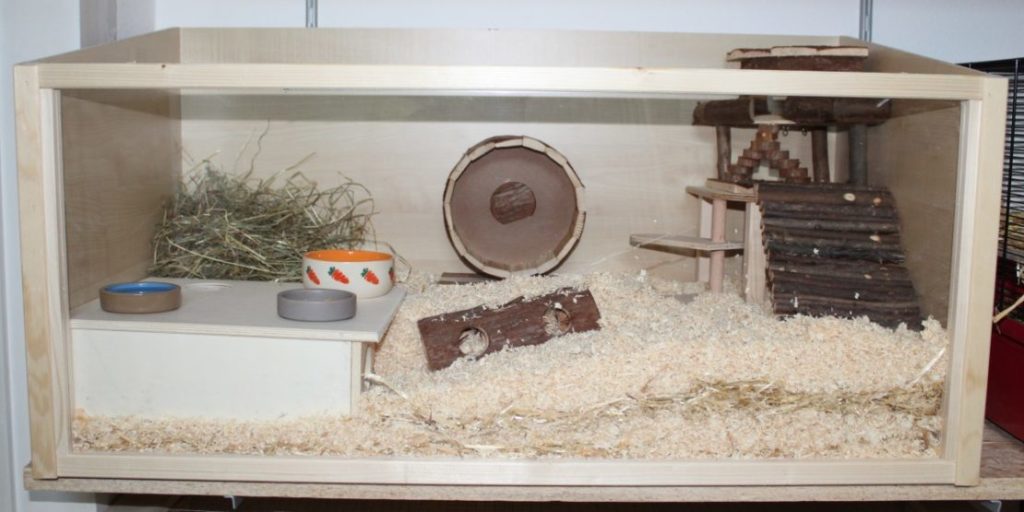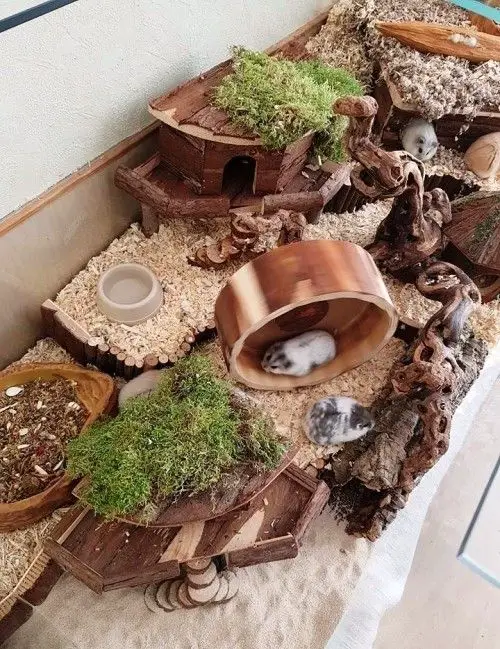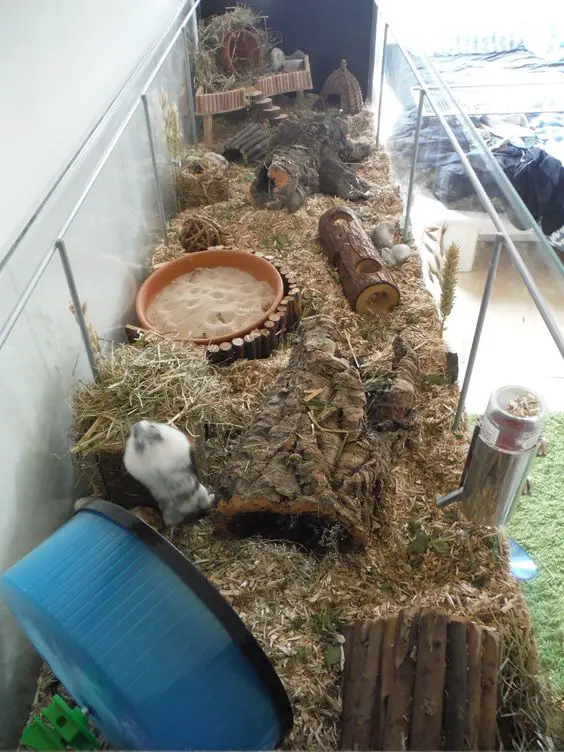- What To buy for my new hamster?
- 1-Your hamster will need a large enclosure:
- 2- Your new hamster will need safe bedding and a nesting material
- 3- The wheel is essential for your hamster
- 4- The sandbox (sand bath) and the dib box
- 5- Hideouts and tunnels are a necessity for your hamster
- 6- Ladders, bridges, Platform, tunnels, and climbing toys
- 7- Food and water will be crucial for the well-being of your new hamster
- 8- A travel cage, a small kitchen scale, and some money for your hamster
- The Hamster Carrier
- The Playpen
- Final thoughts
Despite their small bodies, hamsters are very active rodents and need big things, starting with a large cage, lined with a large layer of bedding with nesting material, a large sandbath in one corner and a large wheel in another, hideouts, tunnels, ladders, toys and chew toys, a variety of food, water, daily attention, a little money saved for the vet and most of all, lots of love.
What To buy for my new hamster?
Please, the whole article is important, from the beginning to the end, you will only read it once but your hamster will benefit all his life from this knowledge that I transmit to you here, so make an effort, I know that you hate to read but it is necessary for the good of your hamster.
I will not only tell you exactly what you should choose and buy for your new hamster but also give you tips on how to install your hamster’s cage, a perfect installation that will please your Little Fella, Let’s dive in right now:
What you need to know before getting a hamster
1- Prepare yourself or your children for the fact that the hamster may not live more than one year even if it can stay alive for more than 4 years in some cases.
2- Hamsters are crepuscular animals in the wild but nocturnal when in captivity, so you will only see your hamster briefly during the day if it wakes up and only at night.
3-Your hamster may bite and not like to be held even if you are trying to tame it, they are solitary animals that do not like to share their enclosure with anyone, neither other hamsters nor your other pets.
If you want several hamsters, prepare several different enclosures, and your hamster will hate your cat and dog, it’s rare but, it may not even like contact with humans!
4- Your hamster will demand daily attention, daily spot cleaning, a wide variety of food, and a special diet, so expect to seek and find your hamster’s preferences during the first few months.
5- As soon as your new hamster settles in your room, you will no longer be able to turn up the volume on your TV, never shout in the room, no more vacuuming, your cat should never be left alone in the room, your friends should never open the cage, you should no longer make too much noise during the day, hamsters hate to be disturbed, surprised, woken up, otherwise they will get stressed and diseases will follow.
6- Like rabbits and guinea pigs, hamsters have incisors (front teeth) that never stop growing, so they will need chew toys and all sorts of branches. I am telling you this so that you know that bar biting is a symptom of stress in hamsters because they do not gnaw on iron, copper, or plastic!
7- If you are someone who travels a lot… etc know that traveling is not recommended for hamsters, traveling stresses hamsters a lot and you have to think beforehand about who will take care of your hamster if you go on a trip…etc
After we have seen these few truths that you need to know about hamsters, let’s see what your new hamster will need for its new home:
1-Your hamster will need a large enclosure:
Forget what the pet stores and even the RSPCA recommend when it comes to choosing a cage for your hamster.
Hamsters can travel 5.5 miles overnight and need an enclosure that is as large as possible.
If you can set aside an entire floor or at least one room for your hamster, do so and it is still not enough.
So, 1000 square inches is the minimum floor area that your hamster enclosure should have, they say at least 450 square inches but that’s bullshit!. Your hamster will also need a playpen to let him out when you clean its enclosure.
You can make one yourself, use Ikea Detolf, or order one, especially from aquarium manufacturers, but please do not put your hamster, of any breed, in a cage that has less than 1000 square inches of floor space.
HOPERAN Wooden Hamster Cage
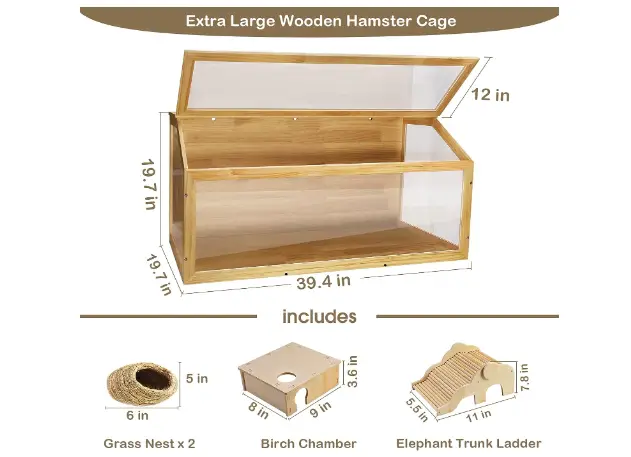
ECOFLEX® 36″ Mojave Reptile Lounge
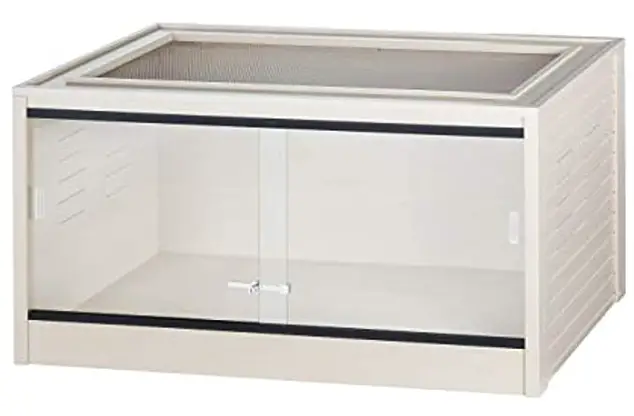
A Large Hamster enclosure from Mewoofun
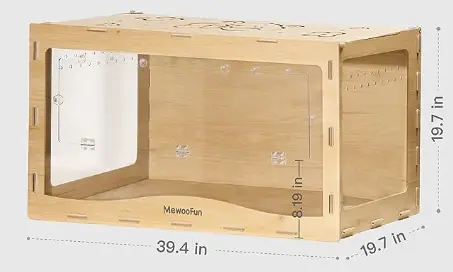
Don’t fall into the trap of stores that tell you that you are going to put floors between two small cages, or put a tunnel between two small cages, etc. You need more than 1000 square inches of continuous floor space.
I prefer that the enclosure has a glass front, the floor, and the other 3 sides in wood (melamine) which does not absorb water (and the urine of your hamster) to avoid moisture and mold, odors, and bacteria.
Where will I put my hamster’s cage?
Hamsters like to be a little high to see what is going on in the surroundings (in the room), so put the enclosure on a support, a bahu, for example, about 3 feet high.
The area of the cage must not be directly exposed to the sun, nor to the air current, a source of heat, and especially cold.
The hamster’s room must be quiet at all times because they hate noise, so avoid walls and windows that face the road.
2- Your new hamster will need safe bedding and a nesting material
Pet stores are also full of substrates, some of which are really dangerous for hamsters, I have clarified everything in this article on healthy and dangerous substrates and bedding.
But I can recommend without hesitation paper-based bedding, from Kaytee for example, you can choose colored bedding but natural white is the best.
Be aware that when you first set up the cage, you will need a large amount of bedding, so buy two or three bags to make a thick layer (15 to 15 inches) on at least one side of the enclosure and a thinner layer on the other (5 inches).
Your hamster is a burrowing animal and will love it, as it will spend a lot of time tunneling and digging in this bedding.
Paper-based bedding is also great for odor retention, the hamster’s tunnels don’t collapse and the hamster’s pee almost never reaches the floor of the enclosure.
Once you have installed the bedding, you will not need to change 100% of the bedding during the cleaning, but only half or even a third of the bedding if you do the spot cleaning properly.
Kaytee Clean & Cozy
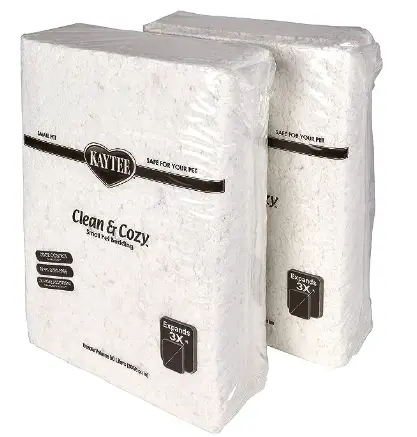
Aspen natural bedding
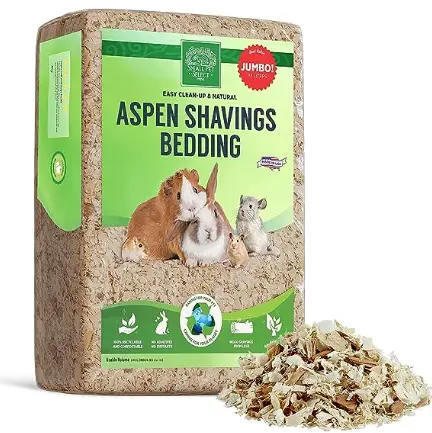
Kaytee Small Animal Hardwood Aspen Bedding
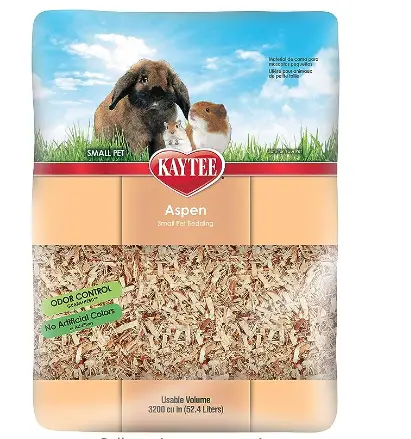
The nesting material for nest building and hamsters’ nesting behavior:
In its natural habitat, the hamster, this member of the Cricetidae family, collects hay, bird feathers, natural cotton, and dry leaves … to build its nest, to which it reserves a subterranean chamber of the one it will dig when it reaches sexual maturity.
But in your enclosure, he will use the bedding but he will especially love that you give him toilet paper, here, you heard me well, just tear toilet paper, dry, and clean of course, the toilet paper not colored and not perfumed.
Your hamster will use it to create his bed and have a comfortable nest and especially cozy and isolated from the elements, especially in winter, because the cold, less than 20°C, will risk putting your hamster in survival mode, hibernation.
Avoid all cotton nesting materials, the cotton filaments wrap around your hamster’s head or legs and create real problems.
Hamsters need digging Substrate
Hamsters are digging animals and would love encountering substrates and other textures than the usual paper or wood bedding in their enclosure. That’s why, at least one additional digging material is required, Sand, hay, Coco soil, Wood shippings… here’re some good ones:
Zoo Med ReptiSand
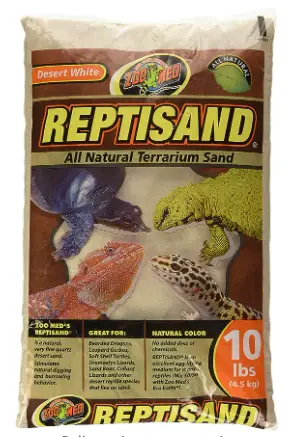
Grandpa’s Best Orchard Grass Bale
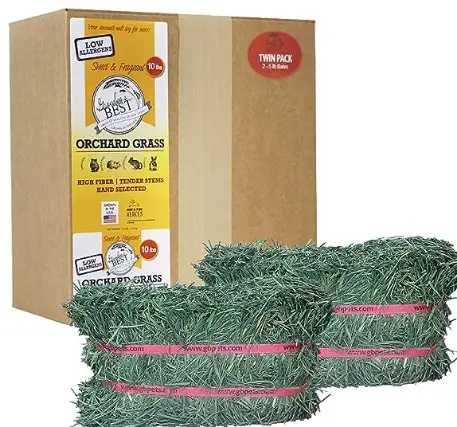
Exo Terra Coco Husk
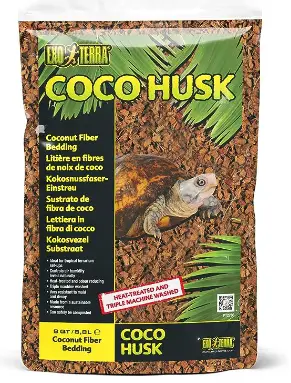
3- The wheel is essential for your hamster
Your hamster will need to exercise all night long.
These clever little creatures will walk up to 5.5 miles every night, and the exercise wheel is ideal for simulating this distance. It’s also necessary to keep your hamster healthy especially if your hamster is a Dwarf Campbell’s one, they may get diabetes if they lack exercise.
The hamster uses his wheel a lot during the night, it also keeps him in good shape and prevents him from getting bored.
The wheel of your hamster must be big enough for him
If it is a Syrian hamster, the minimum diameter of the wheel is 11 or 12 inches, 30 cm (not less than 8 inches for the small Syrian), and at least 8 inches in diameter for Dwarf hamsters and Chinese (not less than 6.5 inches for the small ones).
If you choose a small wheel, it will bend the spine of your hamster which will cause pain (herniated disc) and in the long run, this could even paralyze him…
The wheel must also be made of solid plastic, I prefer those that have lines or bands that prevent the hamster from sliding when he runs on it.
Avoid Bared wheels and meche wheels, they are dangerous for hamsters, their paws get stuck in them and they easily break a finger or a paw.
Niteangel Super-Silent Exercise Wheel For Syrian Hamster
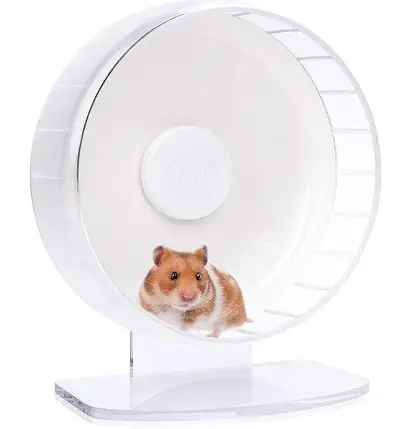
Silent Runner hamster Wheel (for both Syrian and Dwarf hamsters)

Kaytee Silent Spinner Wheel (for dwarf hamsters only)

4- The sandbox (sand bath) and the dib box
You can choose any plastic sandbox as long as it is at least: 4 to 5 inches high and one square foot in surface.
This sandbox is your hamster’s bathroom, and even its toilet (not always).
Put at least 2 inches thick of children’s play sand or chinchilla sand, so it must be dust free and sterilized. You can get this bath sand from Amazon(BUCATSTATE Dust-Free Desert Sand Hamster Bath)
Your hamster should never get wet and if this happens, dry it quickly with a towel before it gets stressed.
To clean himself and take his bath, several times a day (during the night); dwarf hamsters, roll in the sand while Syrians love to dig in the sand and throw it on their backs and then shake to get rid of it.
The grains of sand will get coated with the excess oils that cover the hamster’s hair and fall back into the tank.
Thus, the hamster will keep clean fur, without agglomerates of hair, and a fur well sealed and insulated from heat but especially from the cold of the night, especially during winter.
Don’t listen to the shopkeepers who show you shampoo for hamsters…etc
You will just need a children’s toothbrush or a small non-metallic small pet brush to help your hamster to take its sand baths if it hurts itself or does not arrive alone.
Small scissors to cut your hamster’s matted hair, even if it’s rare, and why not cut some of your Teddy Bear hamster’s coat, when it’s hot in summer (long-haired hamster) if that’s the one you’re going to buy?
BUCATSTATE Hamster Dust Bath Container for Dwarf hamsters
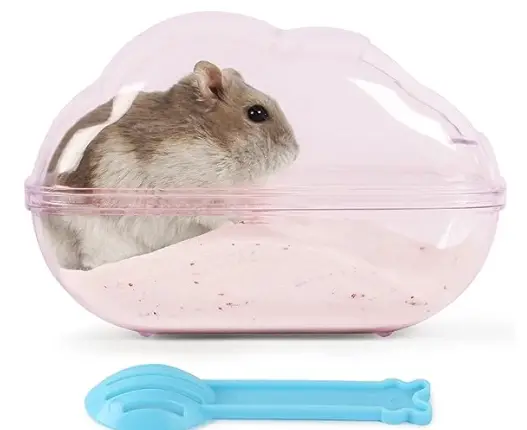
KUYYFDS Habitat Décor, Hamster Sand Bath Container (for Syrian hamsters)
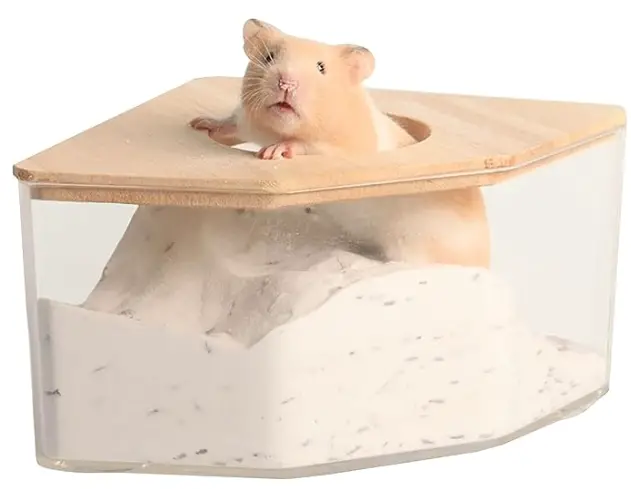
PREX Oval Roaster Dish can also do the job for Syrian hamsters

5- Hideouts and tunnels are a necessity for your hamster
Hamsters are prey and they love to have hiding places, things that provide shade, and tunnels buried under the substrate to take shelter in case something stresses them.
I recommend you put at least two hideouts and two tunnels, in untreated natural wood if it is possible, otherwise plastic will do the job well.
For the location of all these elements, I recommend the German natural enclosure setup, it is an installation that best reproduces the natural habitat of the hamster.
Buy also a small hideout that you will install in a corner of the sabbath, your hamster will enter it and will even make its toilet if you are lucky, because this will facilitate the spot cleaning of the cage.
MagiDeal Wooden Hamster Hideout
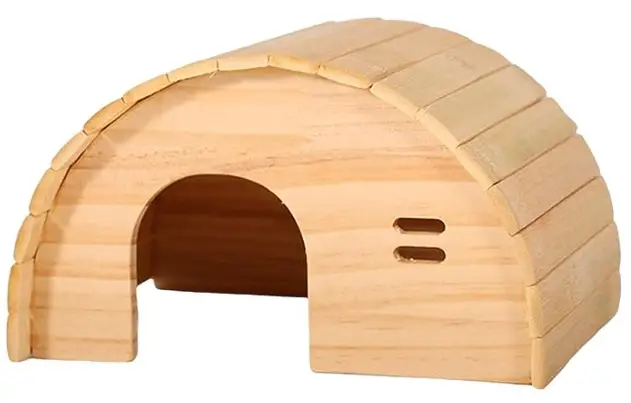
Wooden Hut
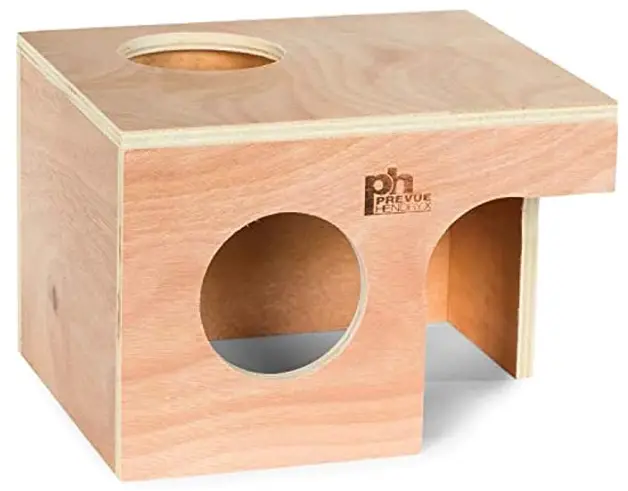
Wooden Hamster Tree Hole
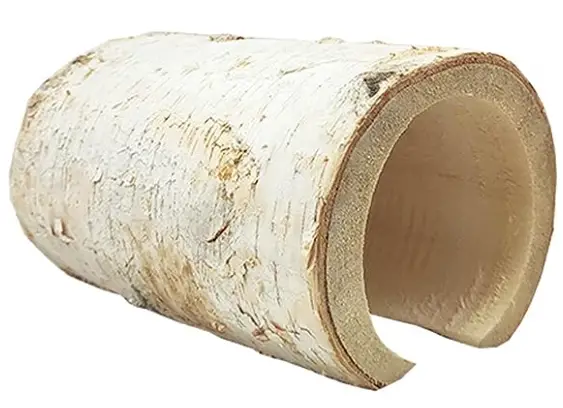
6- Ladders, bridges, Platform, tunnels, and climbing toys
Hamsters need a lot of physical stimulation, which is provided by the wheel, ladders, etc., but also mental stimulation.
A bored hamster is a hamster that will only live half its age!
So make sure that your hamster’s cage is full of toys and chew toys, because your hamster’s teeth grow continuously and he must file them every day by chewing wood … etc
Hamsters also love to climb things, so have bridges, platforms, a ladder, …. A piece of branch … be creative to always surprise your hamster and keep him busy all night.
Think also to always change the place of the elements of its cage to satisfy the instinct prospector of your hamster, they love puzzles and discover new elements, toys … etc
7- Food and water will be crucial for the well-being of your new hamster
Temporary food for your hamster
Here are the three food mixes I recommend for feeding your hamster before you start making your own food.
Oxbow Essentials Hamster Food

Kaytee Fiesta Pet Hamster
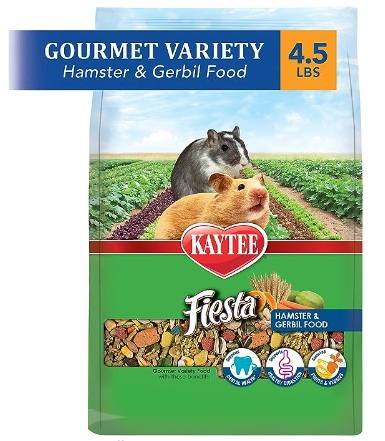
Kaytee Forti-Diet Pro Health

Your hamster will need at least 10% of its weight in food every day.
The food is put in a small ceramic or glass bowl, heavy so that it does not spill so easily.
Same for the water, a bowl of water that you renew every day, you can add a water bottle too, but personally, I prefer the bowl of water, it’s more natural and the bowl will be cleaned every day, so no colonies of bacteria that develop in the water … etc
Hamsters do not eat hamburgers, mac & cheese, or Doritos!
A hamster is an omnivore, it will need a strictly varied and healthy food if you want it to live as long as possible.
I used the word “strict” because you have to be attentive to what your hamster is going to eat, he needs a balanced diet, and thank God, I dedicated a whole article on what a hamster should ideally eat.
Basically, a hamster will eat on the same day:
- A seed mix and cereals (food bag)
- Dried herbs that you sprinkle near his food bowl and on his cage elements.
- A small mix of vegetables and fresh herbs.
- Protein food, why not a mealworm or a piece of shrimp, dried meat …
- Treats, like a tiny piece of fruit, just a little, twice a week, or when you tame your hamster to encourage him to climb on your hand and trust you … etc.
Here’s in detail what hamsters eat, the proportions of each food, and how to buy or prepare the seed mixes and food for your hamster.
8- A travel cage, a small kitchen scale, and some money for your hamster
You will also need to monitor your hamster’s health on a daily basis, you should also know the different symptoms of common hamster diseases.
Things that can cause stress to your hamster, to avoid them, like noise, light at night … etc.
But also, you will need a small digital kitchen scale to monitor the weight of your hamster, because a hamster that gains or loses weight quickly is surely a sick hamster that must quickly see a veterinarian.
Speaking of vets, you should set aside at least $100 in case your hamster falls off your hands and breaks a leg, or just gets sick and needs care and medication.
Your hamster may never see a vet in his life, but ask your parents if you are not working yet or put this money aside because you must react quickly if your hamster is sick, the Wet tail for example, can kill a hamster that does not heal in less than 3 days!
The Hamster Carrier
The pet Carrier is very useful not only to transport your hamster if you move with him, or if you take him to the vet, but especially, this small cage will serve you during the taming of your hamster and also each time you clean his enclosure
You can put inside a little bedding, a small bottle of water and a bowl of food, a small chew toy, and a wheel if there is enough space.
The Playpen
Your hamster must have a secure place where you can put him and exchange with him, you can use a room, empty, or there is no furniture where he can go and hide and become inaccessible, but especially a room without danger.
The best is to use what is called a Playpen, you can buy one, already made, but it is just plastic panels like those of the Cube Storage Organizer, that you will attach between them and thus delimit a safe play space for your hamster.
Final thoughts
A hamster needs above all you to be responsible, it is a living being, and it should not just cost $20 !!! Don’t look at that!
You have to learn everything about hamsters in order to offer yours a happy life, learn how these little Fellas communicate their joy, their pain, and their discontent…
Don’t be stingy when you buy the necessary to welcome your hamster.
They are lovely pets, it will return your kindness, they will also say to you that they will be always there to surprise you, to amuse you with their falls, their comings, and goings, their squeaks, their mimes, their night escapes…etc
The hamster is a perfect pet when you get to know it.
There are many good tips in my articles about hamsters, I invite you to read them all…

